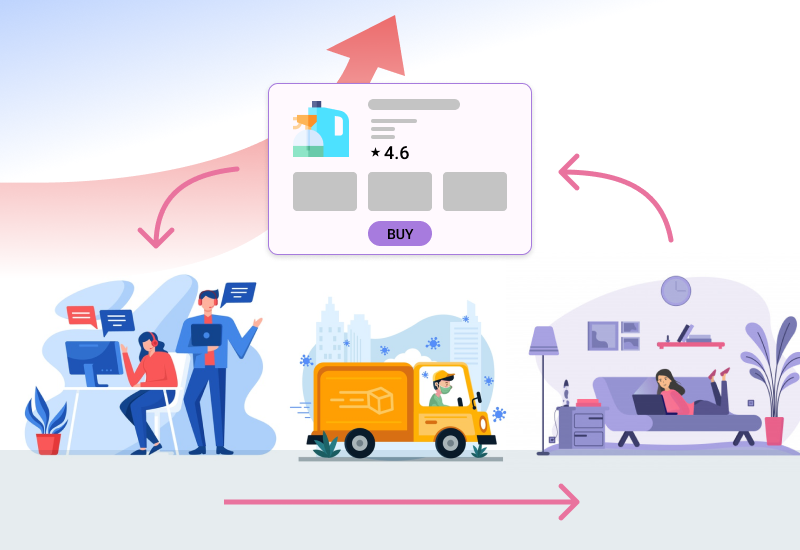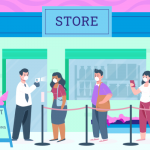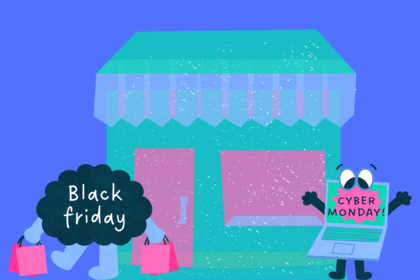As lockdown restrictions are lifted in various parts of the world, people are showing increased enthusiasm toward coming out and spending their money, which is good for the global economy. This is particularly true in the case of Europe, where even the worst-hit countries like Italy and Spain are gradually easing restrictions.
Although the COVID-19 pandemic has not gone away for good, according to the latest report released by the Commerce Department, retail sales, comprising sales at stores, restaurants, and online shopping, has increased by a seasonally adjusted 17.7% in May.
The increase in retail sales is compared with the sales of 1992, considered as one of the highest on record.
Though the numbers paint a hopeful picture, the reality is that sales remain sluggish and below pre-pandemic levels.
Also, with warnings from scientists about a possible “Second Wave” coming and no sign of an effective vaccine for COVID-19, we are sure to be in a recession for a while.
Amp Up Sales in the Recession
All things considered, from an eCommerce perspective, it makes sense to leverage the increased online engagement of the present times to increase sales. Here’s what you can do to amplify sales:
1. Focus on your loyal customers
One of the most valuable assets that you have right now to increase sales is your existing customers. For most eCommerce stores, the top 20% of customers are responsible for 50% of overall revenue.
Make sure to align your marketing efforts and investments with this segment of customers to improve your bottom line.
Rather than merely providing discounts and deals, provide additional value. Provide free shipping, offer great customer service and highly personalized recommendations, interact with customers on social channels, and keep your messaging relevant to impress your existing customers.
2. Tighten your marketing game
It’s natural to be wary of spending your money on advertising at a time like this Obviously, you want to minimize operational expenses.
However, totally ignoring marketing will hurt your business in the long run. Totally cutting down on your ad spend now will force you to spend an increased amount to get back on track and amplify your brand recognition later.
Continuing to invest in marketing now, albeit at a smaller scale, has the advantage of leveraging cheaper ads at a time when your competitors might also be cutting their marketing spend.
Beyond spending money on advertising, there are other ways to amplify sales. Here are some of them:
- Get reviews from your existing customers: With more people shopping online now, your business will get new visits from potential buyers. Since seeking validation to make a decision is core human nature, reviews from your existing customers will help a great deal.
- Connect with your audience on Instagram: Many brands have successfully leveraged the power of Instagram during this lockdown to stay relevant and connected to their customers. The world’s second largest social media channel is particularly useful for shoring up the brand reputation of eCommerce-based businesses.
- Make use of Referral Marketing: Nothing can compare to peer-to-peer marketing. At times like this when shoppers are calculative about their choices, a little nudge from a peer can help them make that all-important purchase from your brand. So, use a referral marketing campaign now.
- Use Live Video Streaming on Your Social Channels: Live video streaming is engaging, authentic, and helps build an intimate connection with your customers. It captures eyeballs and gives you instant feedback. It lets you clearly gauge what your customers want by interacting with them.
- Rethink your Cross-sell/ upsell strategy: In order to increase your sales now, you need to tap it from all the angles possible. As a general practice, this strategy is used before or after a checkout, but now you can also cross-sell and upsell to your customers whenever they check their delivery status using your own branded tracking page (You can simply create one using LateShipment.com).
- Build your audience organically: SEO is more important than ever now. As people are spending more time on the internet, purchasing online and looking for more locally sourced goods, having your website well optimized can play a critical role in bringing in new traffic. Best of all, it’s free.
3. List your store on different marketplaces
If you see your sales graph on a downward curve, try listing your products on different marketplaces.
Marketplaces give you exposure to millions of potential customers, consequently helping you gain new customers.
Also, it helps that people trust these large platforms due to their reputation, availability of product ratings, and peer reviews.
Try listing your products on multiple marketplaces to diversify your risk and help you discover different sets of audiences.
Another important reason for you to list your brand on various marketplaces is that it will help you clear your inventory quickly. The sooner you clear your inventory, the better the cash flow.
If you are on a platform like Shopify, you can easily integrate your store within a few clicks.
Since the recent launch of Facebook and Instagram marketplaces, brands are considering listing their shops on these platforms.
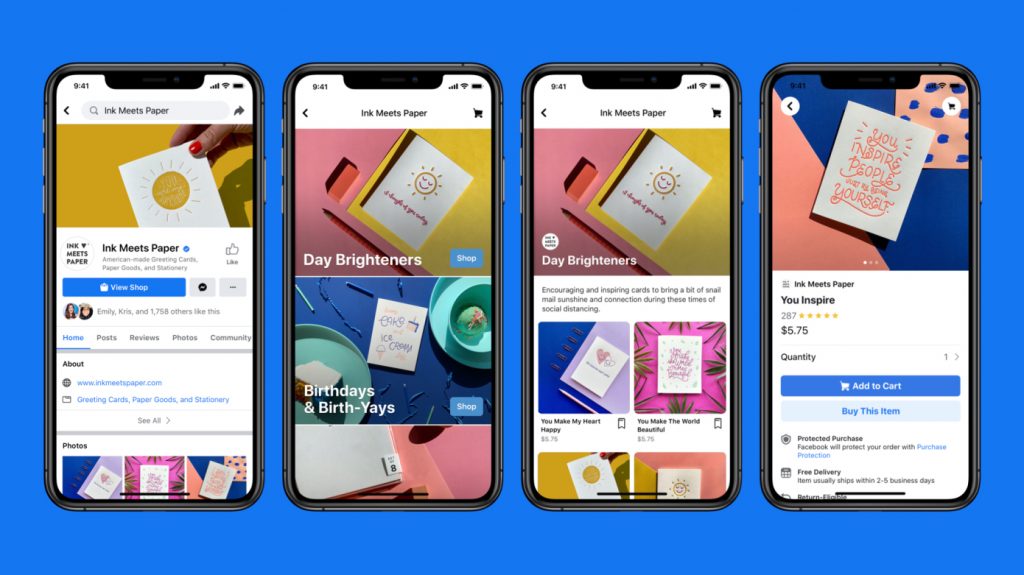
4. Listen to your customers
Expect customer behavior to be dynamic and ever-changing during the present recession.
Since consumers now are more rational about their choices than usual, you cannot take risks by stocking up on inventory that may not click with their needs.
Take a cautious approach to be safe from unsold inventory.
5. Launch new products
According to researchers, a period of recession or the period immediately after it is a great time to launch new products.
One of the main reasons for this being the fact that there is less of a buzz in the market.
This increases the possibility of getting heard and increasing reach. It is also a great way to stay relevant and connected with your customers.
If you are not able to unearth product ideas, you can create a product like the ones that are selling the most currently.
Hawaiian Tropic is a skincare brand, specializing in suncare products, launched a limited edition aromatic candle featuring their trademark coconut scent. This was done to give their customers a sense of being on the beach while staying indoors!
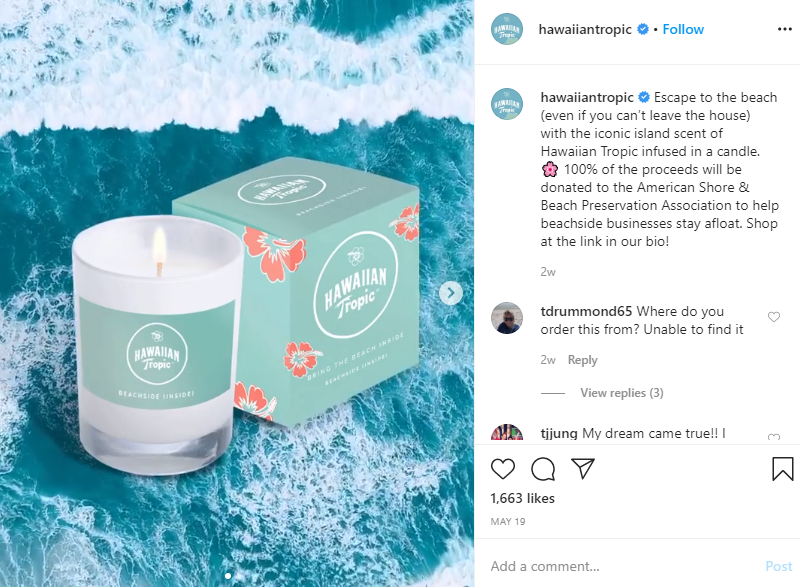
6. Give back to the community
The COVID-19 pandemic has created a situation in which many people have lost their lives, businesses have folded, and breadwinners have lost their jobs.
With the recession at full strength, many people are unable to fulfill even their basic needs.
Taking measures at an organizational level to tap into the tendency of people to reach out and engage with businesses that reach out to those in need can help both your brand reputation and bottom line.
While consumers are cautious about spending their money, you being associated with a charity through sharing a part of each sale with it will give them good reason to make a purchase from you.
FRYE launched a campaign #FRYEFightsHunger to help their charity organisation, Feeding America, during the pandemic. Every time, when their customers entered their FIGHTHUNGER coupon code, FRYE donated $10 to Feeding America.
And also, for every picture shared on social media wearing a pair of FRYEs, they donated $1 to Feeding America.
This not only helped Frye build brand exposure but also gave their customers a sense of giving back to society.

Boosting sales, at the end of the day, is one part of the equation. Dealing with operational challenges in a time of recession is the other. Continue reading for insights on how to handle the operational side of your business.
Operational Challenges to Overcome in the Recession
1. Dealing with unsold Inventory
Inventory lying unsold for long enough will affect the cashflow of your business.
As the economy opens up, you can sell your inventory at full retail price and hope your sales pick up. But since the market has so much unsold inventory, discounting is going to be prevalent.
And with discounts, customers are going to be spoiled for choice. They will simply choose the brands that supply the same quality of goods at a discounted price. So you will probably need to enter the discounting game.
If you plan on holding to your inventory and selling it next season, you will need to bear the cost of the unsold inventory apart from rent and labour charges.
It’s always better to clear off unsold inventory as soon as possible as doing so will give you liquid cash that will help you invest in relevant products for the current situation.
Consider reaching out to a financial consultant for expert advice at this time as the situation is ever-changing.
2. Overburdened shipping carrier networks
Broken shipping networks during the pandemic have resulted in uncertainty over parcel deliveries. And with the lack of transparency and data from the end of shipping carriers, support agents are often in the dark when addressing customers’ queries.
Also, if you use multiple shipping carriers, it can become quite a challenge to juggle between the various dashboards while addressing customer queries.
To handle such a situation, It is incumbent upon your business to equip your support team with a Delivery Experience Management solution like LateShipment.com.
Using LateShipment.com’s Delivery Experience Management tool, you support agents can enjoy a bird’s eye view of all in-transit shipments across shipping carriers on a single dashboard along with independent real-time shipping data.
You will also be able to automate the process of sending delivery notifications to your customers by text or email, which by itself will reduce the volume of incoming customer queries.
Here are some of the benefits of using LateShipment.com:
- Real-Time Visibility – Monitor your outbound & inbound shipments across multiple shipping carriers on a centralized window, in real-time.
- Critical Delivery Alerts – Pay attention to daily deliveries with predictive delay alerts and more on a purpose-built dashboard for support reps.
- Proactive Issue Resolution – Proactively communicate with customers to prevent them from having bad experiences due to delivery failures.
- Custom Delivery Notifications – Send custom or automated delivery status notifications for events like “shipped,” “attempted,” & “delivered.”
- Branded Tracking Pages – Build fully-customizable order tracking pages for your customers to improve brand recall and sales.
Best of all, it only takes 2 minutes to sign up to LateShipment.com and begin enjoying all the benefits for your business.
